Roman rites related to the dead were, on the one hand, more intense and joyful than ours today, and on the other hand, much more terrifying. What role did prostitutes and beans fulfill in this cult, and who was ripping his cheeks out of despair? Here's everything you need to know about the dead and their worship in Ancient Rome.
In our minds, caring for the graves of our ancestors is deeply rooted. The culmination of this custom can be admired especially on November 1, when we visit cemeteries with whole families, which on this special day are lit by thousands of flickering candles. We are not alone in such attachment to our ancestors. Already in antiquity, the cult of the dead and care for the afterlife were an extremely important part of everyday life. Let's take a look at the funeral customs and celebrations related to the feast of the dead of the ancient Romans.
For a small fee, we'll give you the funeral of your dreams!
The thought of death practically accompanied the ancients throughout their lives. In their youth, they thought about their deceased ancestors, and later also about their own death. The memory of the dead was part of a cult that everyone had to fulfill and thanks to which the manes - good spirits of family members were extremely favorable to the living.
The tomb was a sacred place that had to be cared for, decorated and sacrificed there. Archaeological finds confirmed the presence of benches at or inside the tombs, which means that the dead were also celebrated and sat down to feast together .
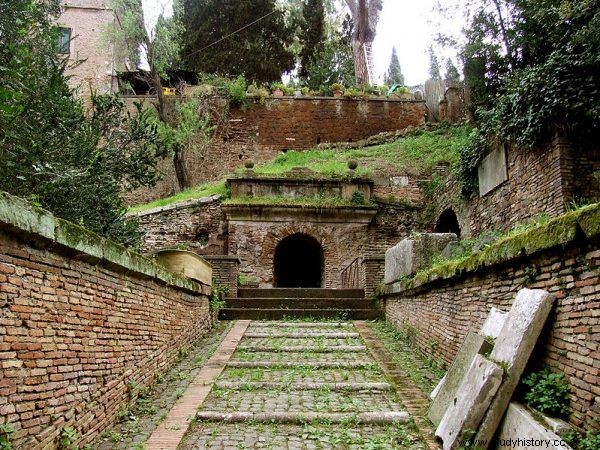
The Scipio Tomb on Via Appia
Organizing a funeral required a huge financial outlay, and the Romans already ensured the appropriate sum during their lifetime. The appropriate amount could be transferred through a testamentary bequest along with the specification of your preferences regarding the ceremony itself. More profitable, however, was the second option, which assumed joining colegium funeraticium during life. - funeral association and payment of annual contributions which provided, if necessary, the financing of a dignified funeral. Often the money was also enough to decorate the grave and even cult feasts.
Passer-by, stand, read and remember me
The location of Roman cemeteries differed significantly from modern preferences. And although the ancient tombs of their ancestors also placed outside or on the outskirts of the city, these were not isolated, quiet and reverie places. Such a location was of course related to the requirements of the cult of the dead, but it was also purely practical. The location of the graves outside the city allowed for hygiene and prevented any undesirable potential blight.
The graves were most often located along the main streets leading to the city - the closer to the road, the more expensive the accommodation was . You could buy a place of eternal rest during your lifetime and build your tomb on it, thus ensuring yourself a real influence on your posthumous home. Along with the roads to the homes of the dead, life and the hustle and bustle of everyday life flowed in. Such a position also ensured the deceased to keep the memory of them. The signs, often humorous, attracted the eyes of wanderers who could stop at the grave to pay tribute and keep the memory of people who passed away.
Out of space
We can imagine that in a city as large as Rome, there was no place for burials over time. The Romans found a way. Columbaria, such as the one near the Porta Latina city gate on Via Appia, consisted of many niches where the ashes of the dead were placed. The catacombs became an expression of this trend on a larger scale. These huge underground cemeteries consisted of an irregular system of corridors, often even over several floors . The dead were buried here in niches carved in the walls.
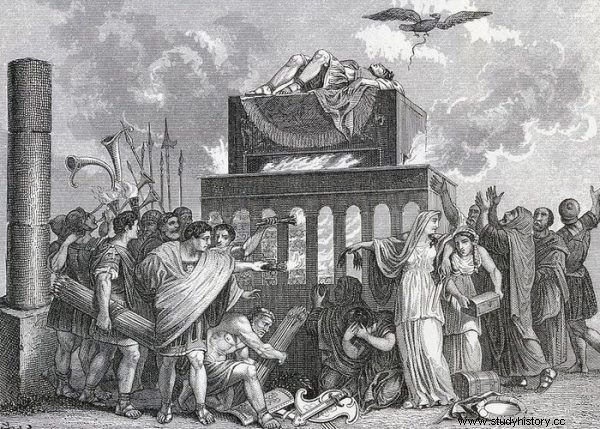
Imperial Funeral
A completely different fate awaited the poor and slaves. These social groups did not have adequate resources to ensure a dignified burial. Their bodies were placed in mass graves marked only with a tombstone. One of such cemeteries in Augustinian times was located in Esquilina, where modern research has confirmed the existence of 75 such graves.
Last way
The funeral in ancient Rome actually began on his deathbed. The relatives gathered around the dying person so that he would not be alone in such a difficult moment. With the last breath, one of the relatives bent over the deceased to take over some of his soul. The others present began to lament the name of the deceased . Then the eyes of the deceased were closed. The corpse was washed and dressed in a toga appropriate to its status, and then placed on a funeral litter.
The family also had to complete the relevant formalities. The deceased had to be registered at the office located at the temple of Venus Libitina - the goddess of death and patron of funerals. From the time of Servius Tuliusz a coin was deposited in her temple for each deceased. The records of the deceased were kept in a sacred grove, which was most likely located near Esquiline or Aventine Hill. It was also here that the items necessary for the funeral could be rented.
The house where death came was often marked with pine or cypress branches. This sad event could also be reported with the help of a hired herald. Depending on wealth and preferences, three types of burials were used in ancient Rome over the centuries. The oldest and functioning simultaneously were inhumation (burial in a coffin) and cremation . With time, the richest could also afford embalming . Interestingly, in ancient Rome, the custom of mummification, known from the territories of Egypt, was not adopted - it was considered a foreign practice.
Corpse embalming became popular in the 2nd century CE. and they were mainly used in rich houses. The embalmed body with the death mask applied was then placed in the atrium for 3–7 days (uncovered courtyard in the center of the house or part of it). Lighted oil lamps were placed around, the corpse was decorated with flowers, leaves and wreaths. In honor of an earlier Greek tradition, a coin was placed under the deceased's tongue for Charon, the soul carrier. The embalmed corpses of officials were presented to the public .
The funeral procession was conducted in the case of important personalities at the Forum, in the case of ordinary citizens to another place designated for this purpose. It was the first stop on the last journey of the deceased. Funeral speeches were given here. This moment, especially in the case of officials, could also be used for propaganda purposes. This is what he did, among others Mark Antony after Caesar's death. In his funeral speech, he managed to incite the gathered crowd against the murderers.
The procession then went out of town, to the final burial place. It was led by musicians playing mournful songs on flutes and horns, followed by weeping, dancers and actors dressed as the dead. One of them often wore a mask imitating the figure of the deceased. Then came family members, especially the lamenting women. They had their hair loose and all their movements showed the suffering that was tearing them apart. The law of the Twelfth Tables prohibits injuring one's cheeks in this rite, which underlines how dramatic the sight of a mourning family must have been. More mourners followed.
In the cemetery, the coffins with the body were placed in the grave, while in the case of a burnout, the corpse was placed in a specially prepared passage - the place of burning. The deceased was decorated with his most favorite items, then his eyes were opened and a kiss was placed for the last time. Everything was set on fire, the ashes were poured with water or wine and collected in an urn.
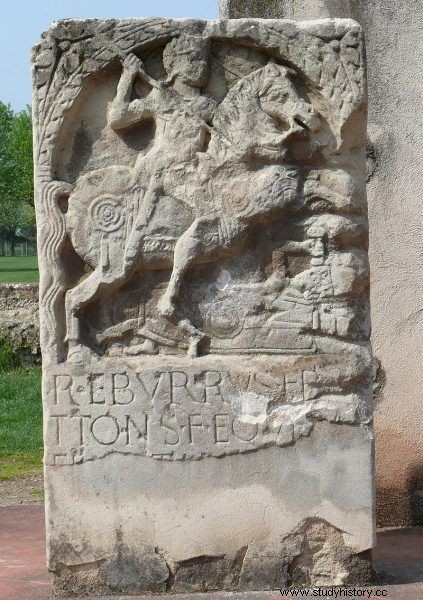
Steles and altars were placed on the tombs to be able to perform rituals in honor of the dead, but also and above all to commemorate the buried person.
Altars were often placed on the graves, where sacrifices were made in the form of food, drinks, aromatic oils, flowers or incense. Most likely, 9 days after the burial, the relatives of the deceased brought him sacrifices.
The cult of the dead could have manifested itself in various forms. Offerings were made, the deceased were feasted with meals at their graves, graffiti was left behind, and even prostitutes were used for this purpose. Brothels were built very often near cemeteries , we can therefore assume that, on the one hand, they had some cult connection with honoring the dead. On the other hand, they certainly also fulfilled a more prosaic task, similar to the toilets placed nearby cemeteries - the deceased simply did not want to deal with their physiological needs on their graves.
All Day of the Dead
The feast of the dead was celebrated twice a year in the Roman calendar and, interestingly, they were very different in character. In February Parentalia - dies parentales were celebrated, which began at 6 am on February 13 and continued until Feralia on February 21. The celebrations ended on February 22, Caristia, when, after having done all their duties, the family came together and strengthened family bonds and love by jointly feasting and worshiping protective deities.
The oldest and best known of these days are Feralia, because from what has survived to our times, we can conclude that only on this day public rituals in honor of the dead were held. It was also an unusual day because of the magical conditions. From Ovid we learn that on that day an old woman performing a ritual in honor of the goddess of death Dea Tacita cast charms on her enemies.
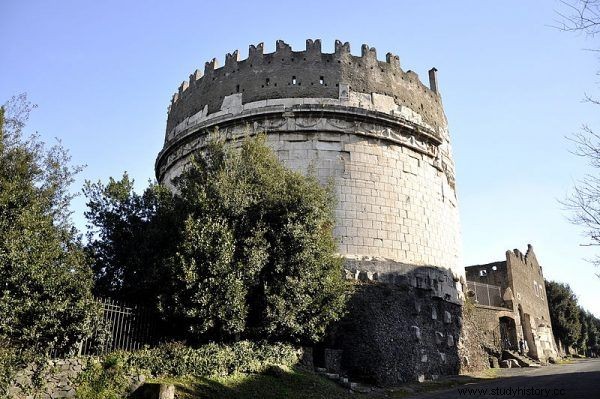
The rich could afford powerful and ornate tombs
During the February celebration, manes were worshiped - the good spirits of the ancestors . In those days, the Romans were driven by a sense of duty to perform all kinds of cult activities in order to maintain good relations with the dead. At that time, the sense of duty was not understood as compulsion - families cared, and one could even hypothesize that it was a pleasure to maintain good relations with the dead. The February celebrations were to symbolically renew the burial. The relatives came to the graves in processions and made offerings in the form of water, wine, milk, honey, oil and blood. The graves were decorated with flowers and feasted with the dead, celebrating the time spent in this way and asking the spirits for protection and prosperity. The practical soul of a Roman also prevailed in the cult of the dead. What could be better than roasting two birds with one stone - with respect to the ancestors, the nearest future was secured in prosperity and health.
Ancestral Demons
However, the celebration of Lemuria, which took place on three separate days of May - 9, 11 and 13, had a completely different overtone. and home ceremonies. Lemuria was most likely much older than the February holidays, and their tradition is traced back to Ovid all the way from Remus himself. After he was brutally murdered, his death was to be atoned by the establishment of a festival. These days were generally considered unhappy and dangerous. The fear of demons and evil souls was deeply ingrained in people's minds.
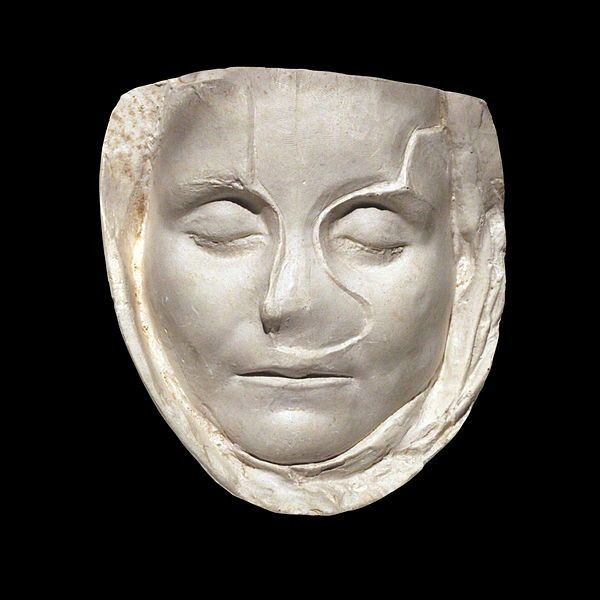
Death mask
The name of the festival derives from the word lemures, meaning wandering souls who would return to earth to the homes of their loved ones and could threaten them. Such evil spirits could have arisen through neglecting the cult of the dead, although more often they were the souls of brutally killed citizens. We can imagine that in times as brutal as the Roman times, it was not difficult to die for the wicked and evil.
As I mentioned above, according to the sources available to us, all Lemuria celebrations took place at home and were carried out by the head of the family. At midnight my father would get up and do the rite barefoot . At the beginning, it was necessary to make the appropriate gesture with clenched fists with the thumbs in the palm of the hand, then wash the hands in clean water. The celebrating ritual was now passing through the house, spitting out the black beans and, importantly, without turning his head, he uttered the sacred formula nine times:"With these beans I save myself and mine." Meanwhile, demonic souls gathered behind him and picked up seeds. After this, let's admit it terrifying, rite had to be washed again, hit the brown vase and say the next formula nine times:"ghosts of my fathers, go away." After such a completed ritual, it was possible to turn around and return to the world of the living without fear that the evil spirits would harm the people living here.
Why were beans selected as a meal for lost souls? We don't know that. Most likely, it had strong cult connotations. The priests of Jupiter were strictly forbidden from touching or even talking about the beans . It seems that it was a very old tradition to stay out of the reach of evil spirits. In Lemuria, the demonic souls were to feed themselves on black beans, and maybe that was what allowed them to get a better afterlife.
As we can see, Roman rituals related to the funeral and the cult of the dead were associated with all spheres of life. The thought of death accompanied people very often, be it on the occasion of holidays in honor of ancestors, rituals of defense against evil spirits, or in the thought of their own funeral. The obligation to take appropriate actions for the deceased was deeply rooted in order, on the one hand, to ensure their favor and care, and on the other hand, to prevent them from turning into demons that harass the living. What catches the eye of the researcher is the fact that death was a rather tame sphere at that time, and although the fear of evil spirits was ingrained in the minds of the living, the rituals in honor of the ancestors were a very joyful event.
